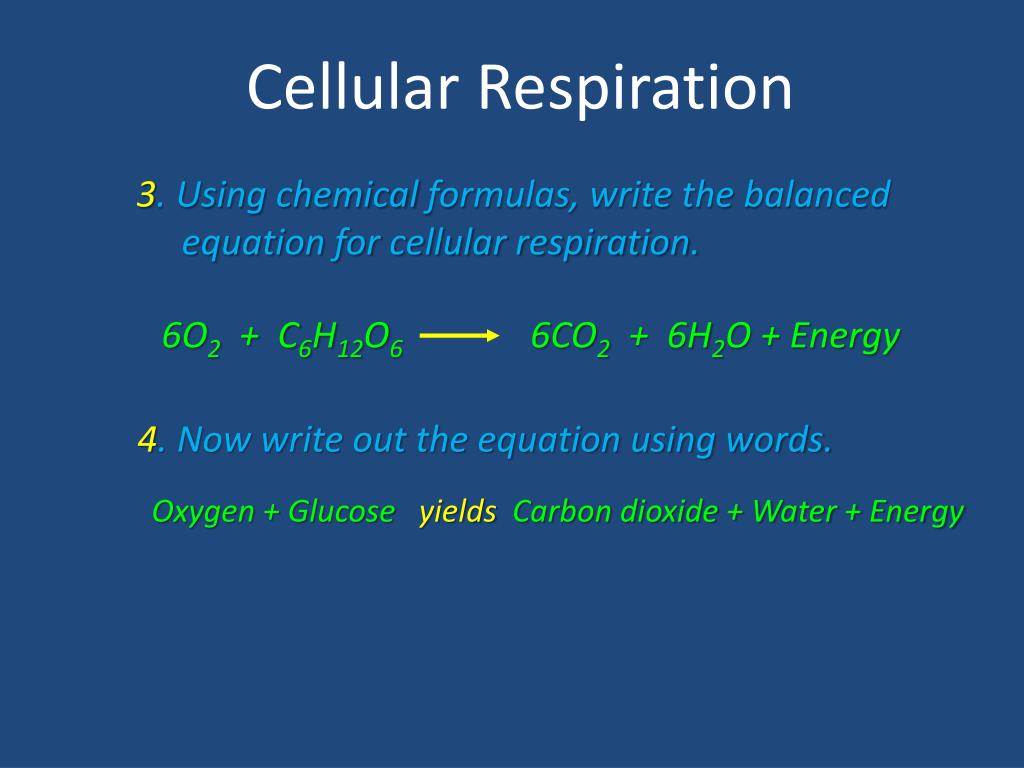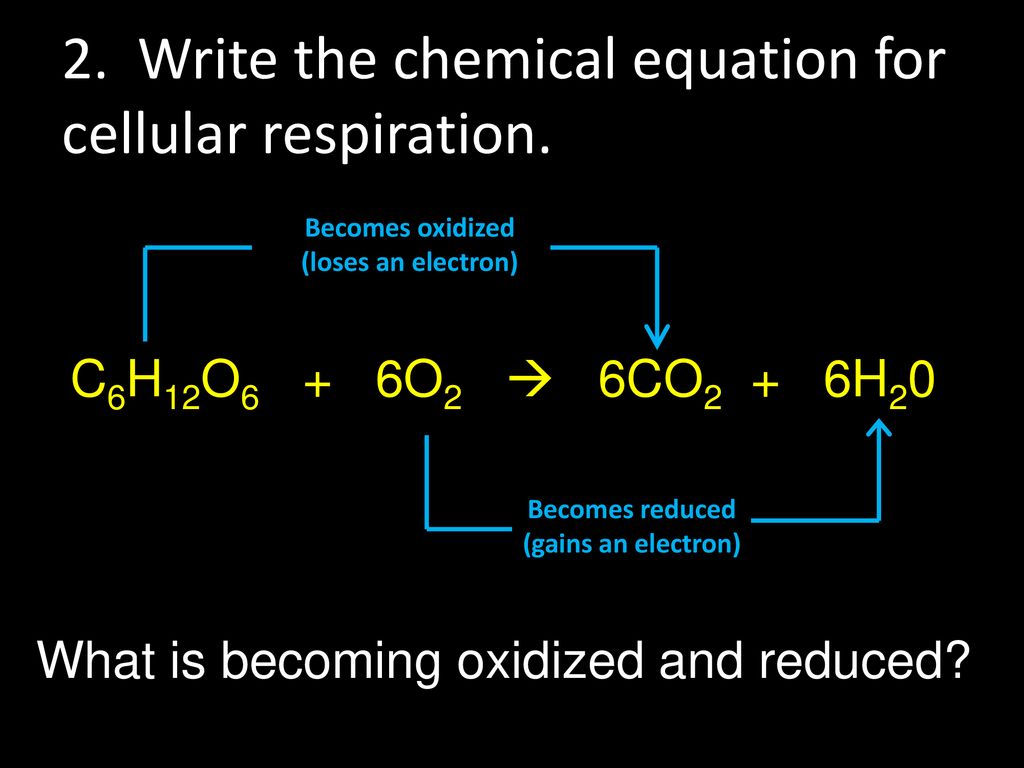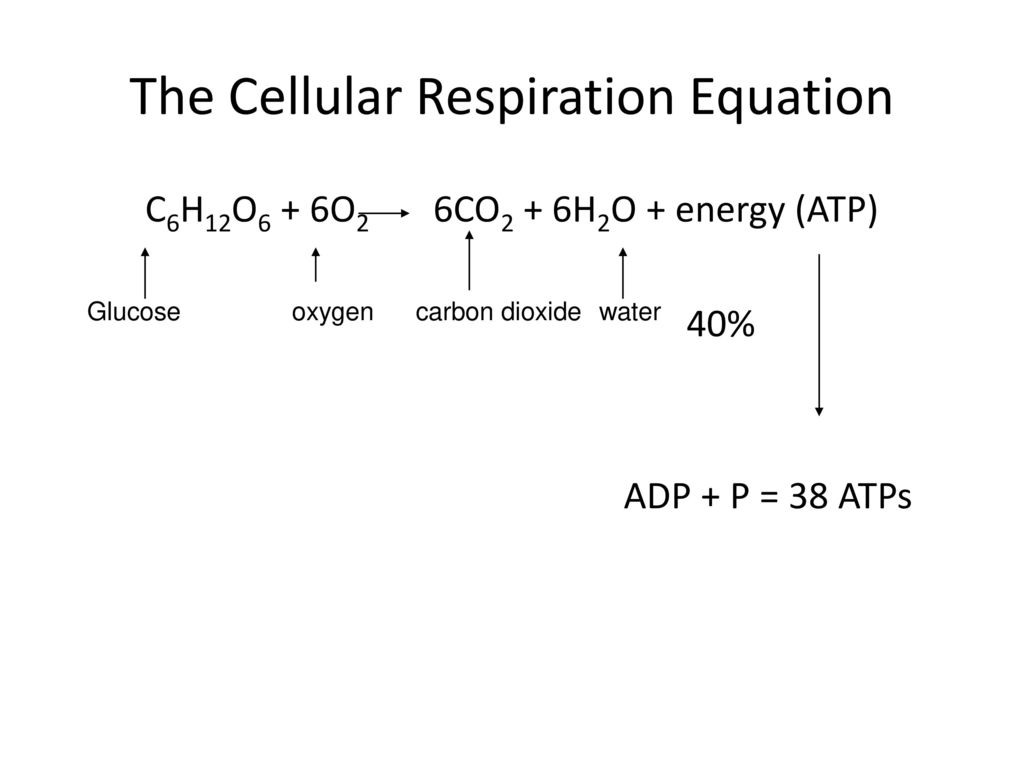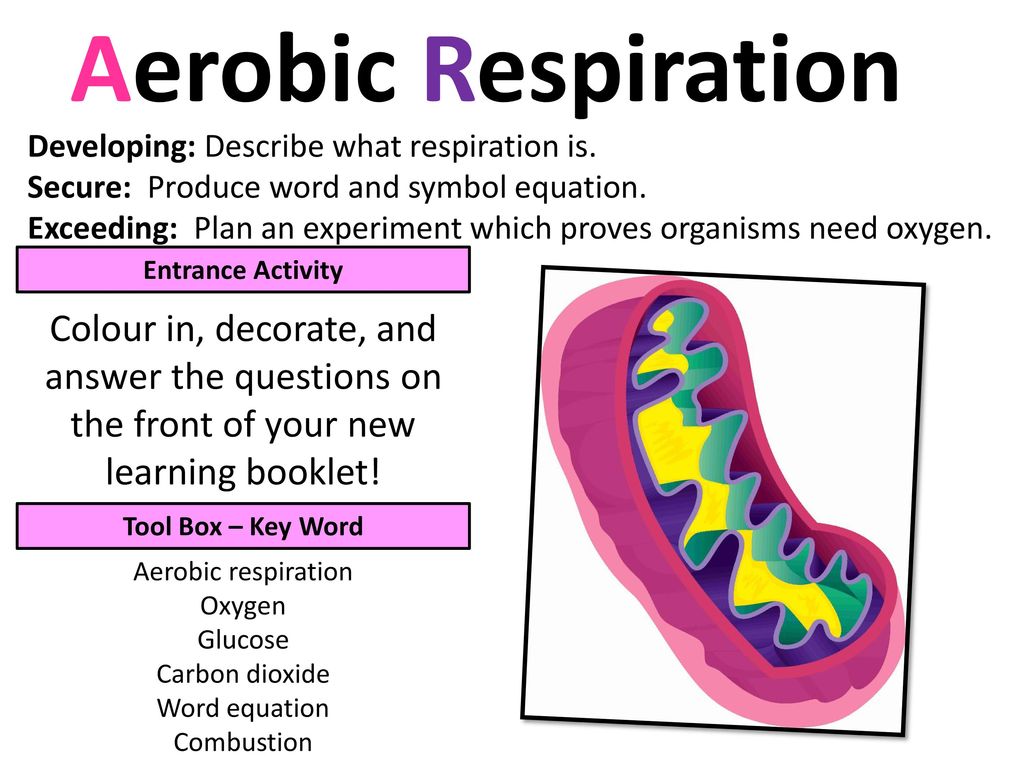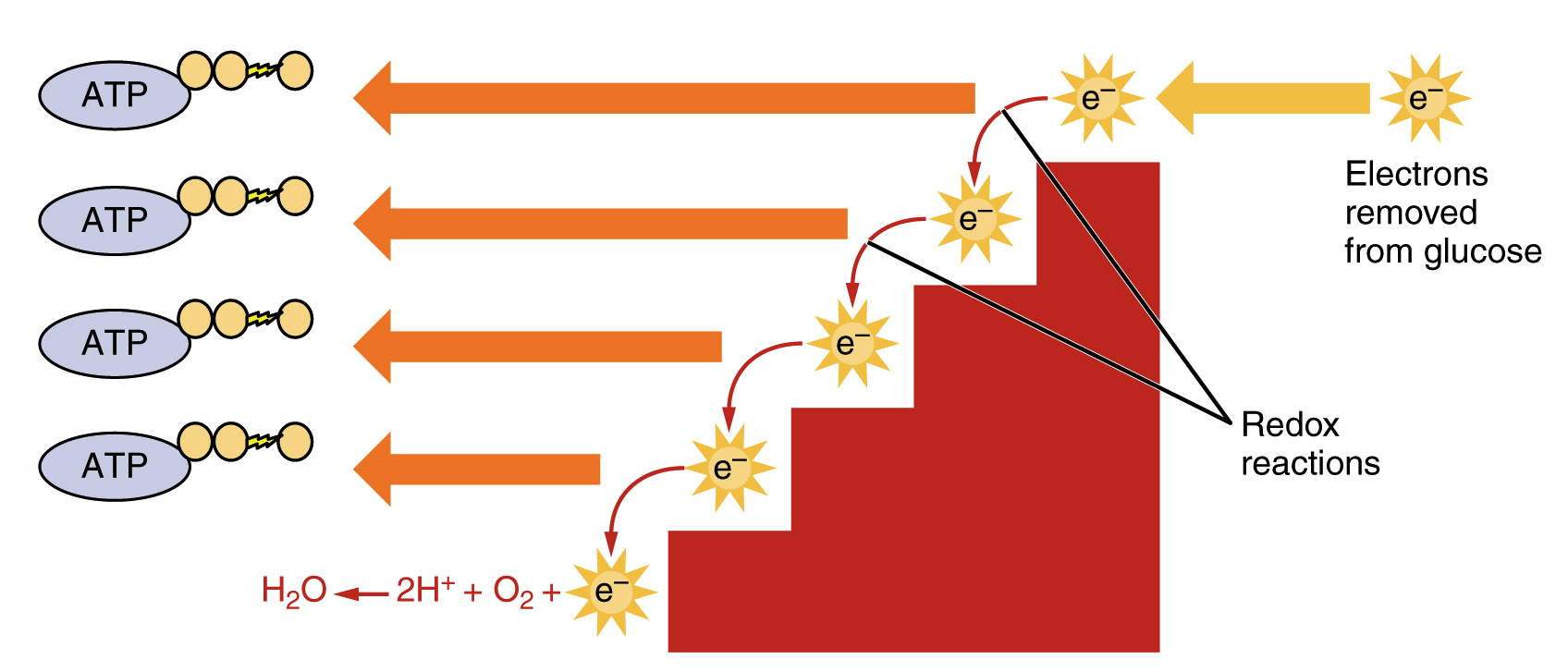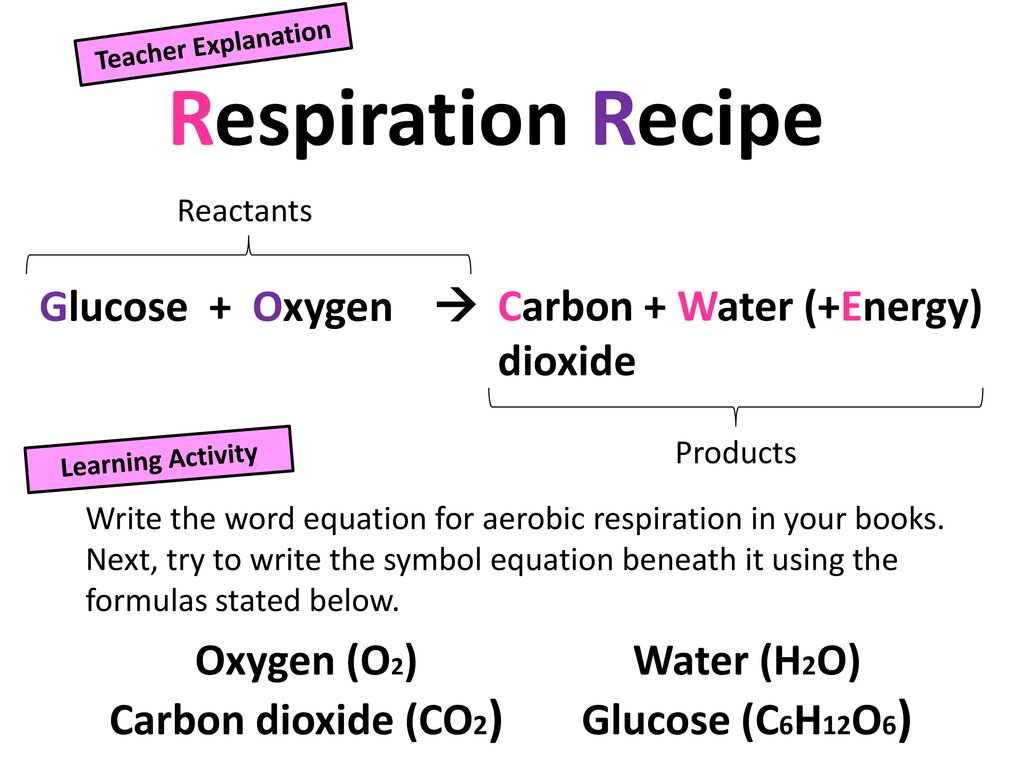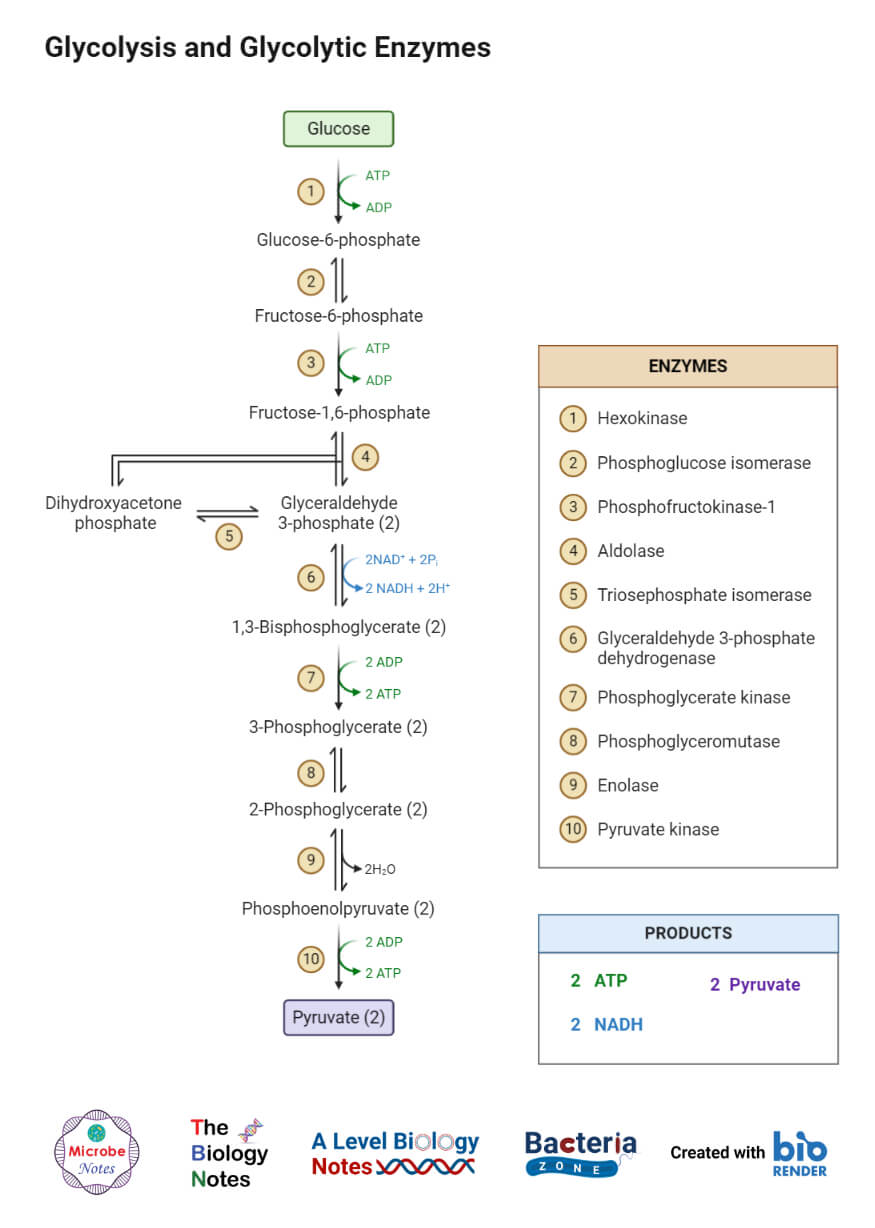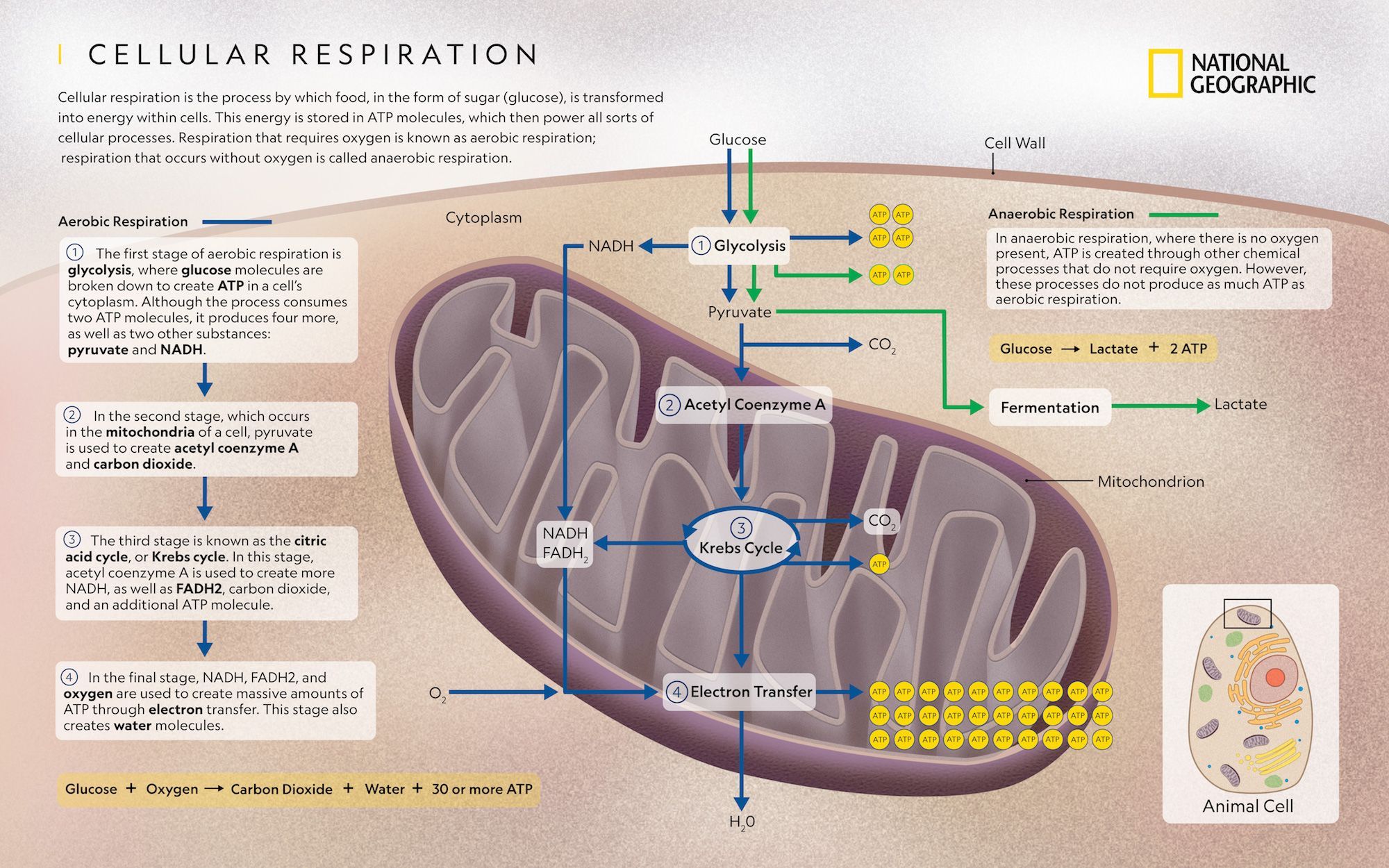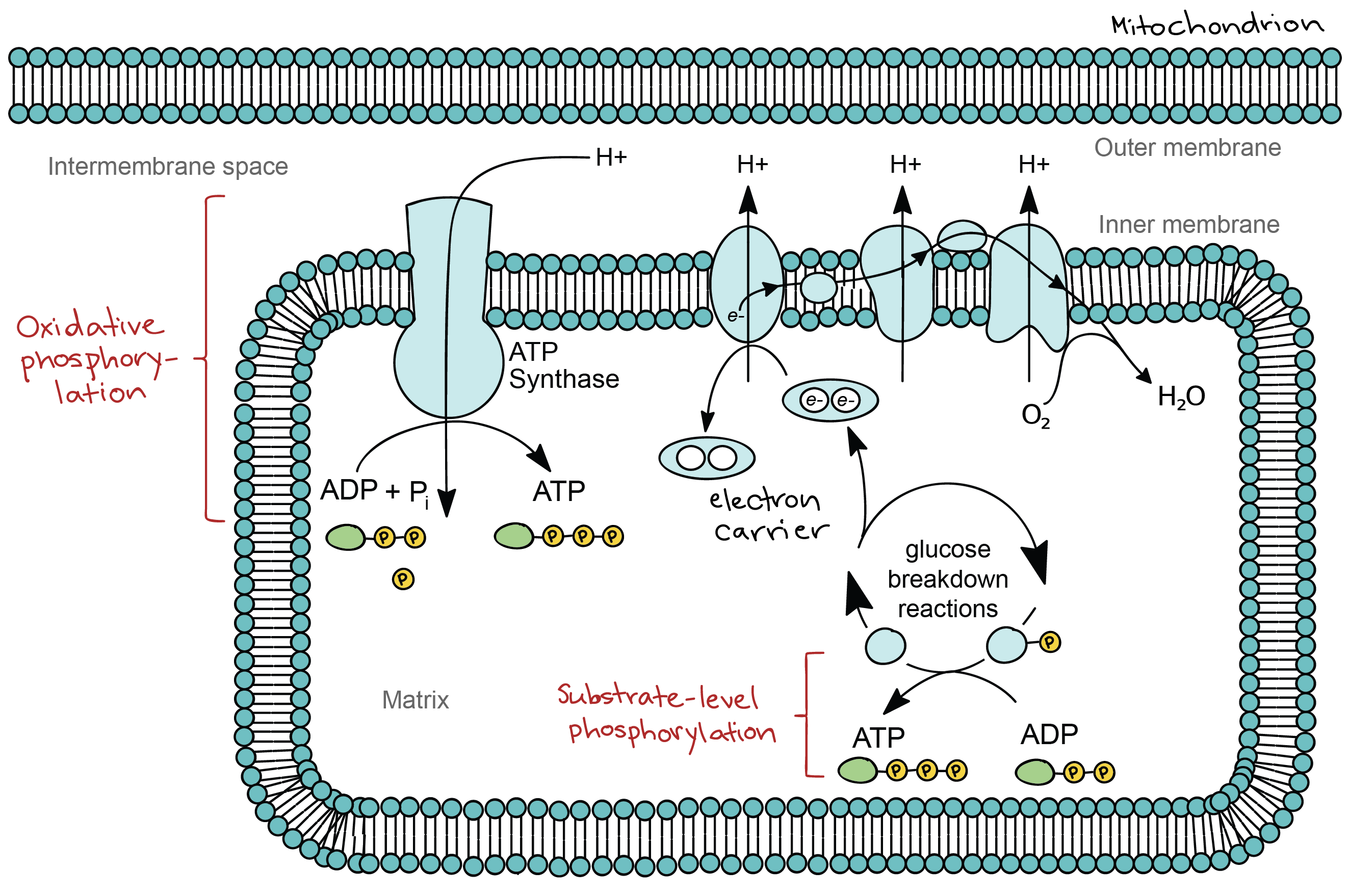Cellular Respiration Formula Definition

To create ATP and other forms of energy to power cellular reactions cells require fuel and an electron acceptor which drives the chemical process of turning energy into a useable form.
Cellular respiration formula definition. The reactions involved in cellular respiration are catabolic reactions that involve the breakdown of larger organic molecules into smaller forms. Cellular respiration is a metabolic process consisting of a series of steps to convert chemical energy sugar into a usable form of energy ATP in the cell. During cellular respiration one glucose molecule combines with six oxygen molecules to produce water carbon dioxide and 38 units of atp.
Before starting with the equation and the more complicated parts of the subject you can begin with aerobic respiration definition the chemical formula of the cellular respiration etc. The process takes place in four stages. Cellular respiration is the process by which organisms convert the biochemical energy of nutrients into ATP.
In photosynthesis what plants need is light energy from the sun carbon dioxide and water. This process breaks down glucose into six carbon dioxide molecules and twelve water molecules. Cellular respiration takes place in the living cells of organisms.
C 6 H 12 O 6 6 O 2 -- 6 CO 2 6 H 2 O ATP is the complete balanced chemical formula for cellular respiration. C 6 H 12 O 6 1 glucose molecule 6 O 2 6 CO 2 6 H 2 O 36 ATP ENERGY carbohydrate oxygen carbon dioxide water ATP energy. This series of biochemical reactions is also called a metabolic pathway Two types of cellular respiration exist.
Cellular respiration is a set of metabolic reactions and processes that take place in the cells of organisms to convert chemical energy from oxygen molecules or nutrients into adenosine triphosphate and then release waste products. Cellular Respiration Formula. Cellular respiration is a set of metabolic reactions that take place in all living cells to release energy by converting biochemical energy from nutrients into adenosine triphosphate- ATP.
The Purpose Cellular Respiration Cellular respiration is the process by which cells in plants and animals break down sugar and turn it into energy which is then used to perform work at the cellular level. Usually the food particle sugar stemmed from carbs is a metabolic fuel in cellular respiration. Also known as the Embden-Meyerhof-Parnas pathway it is the first step of cellular respiration.


